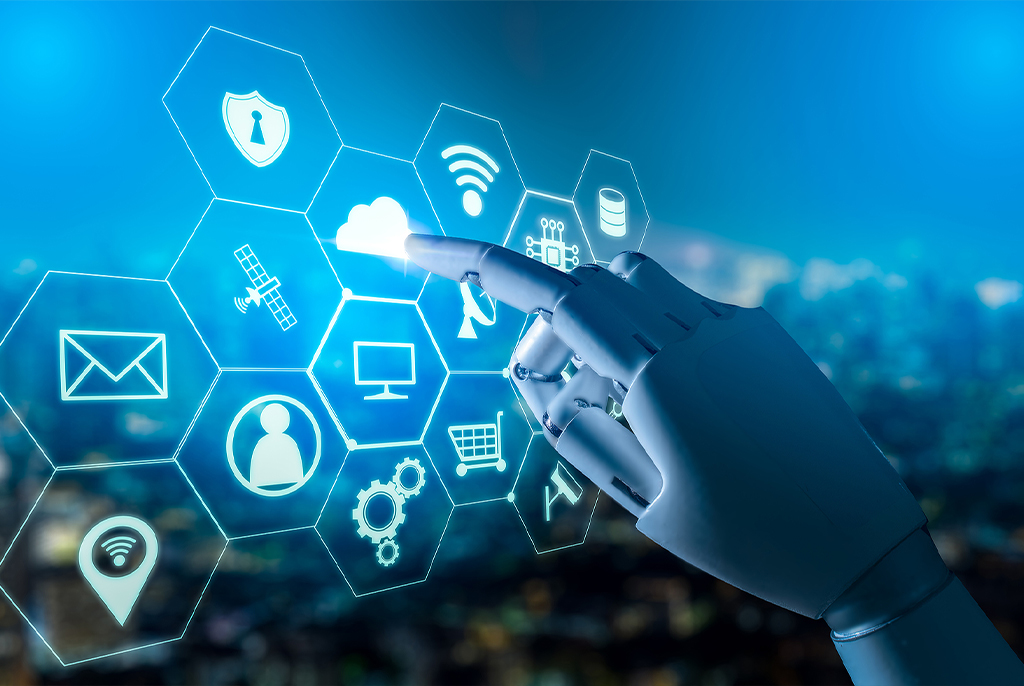
Cyberattacks are a multibillion-dollar industry. Hackers can expedite the entire attack life cycle, from survey through exploitation.
Ransomware attacks pose a severe risk even now. They are a form of malware that denies users or systems access to information and then demands payment in cryptocurrency.
Industries at risk include banks and financial institutions containing customer and credit card data; healthcare organizations; corporations with inclusive intellectual property, client, contract, and employee data; and higher education with student records and academic research.
Artificial Intelligence (AI)
The Internet has brought many benefits, but it’s also provided malicious hackers with new ways to steal money, damage computers, and cause disruption. These forms of cyber attacks range from phishing attacks to ransomware and beyond, with hospitals, schools, and critical infrastructure at particular risk.
AI has revolutionized cybersecurity with its ability to detect and prevent cyberattacks, especially in real-time. However, attackers are constantly developing new tactics to bypass traditional security measures. These include using polymorphic malware, which constantly changes identifiable characteristics to hide from detection by behavioral and signature-based antivirus tools.
This trend is only worsening, with experts warning that we’re about to witness a new wave of advanced AI-enabled cyberattacks. Already, generative AI is being used to create deepfakes, which can mimic the voice and image of individuals such as high-profile executives or civic leaders. This is paired with bots to generate phishing emails that are harder for cybersecurity teams to spot. It’s even being used to enhance BEC and other fraud attacks by providing audio to convince employees to authorize significant financial transfers to criminal accounts.
The Internet of Things (IoT)
While generative AI has grabbed much of the cybersecurity news headlines this year, other emerging threats and hacker tactics also impact businesses worldwide. Among them is the rise of IoT devices and attacks targeting mobile device management systems.
The pandemic-driven shift to remote working has made it easy for employees to bring work home and access company systems from their devices. Smart locks, TVs, cameras, smartwatches, and voice assistants are just a few examples of “smart” or Internet of Things (IoT) devices that can share data as they are frequently linked to the Internet. That connectivity creates vulnerabilities, allowing hackers to hijack the devices and open backdoors into corporate networks.
Sophisticated cyber actors and nation-states exploit these weaknesses to steal information, extort money, or disrupt or destroy critical infrastructure. This makes it critical for individuals, small and large businesses, and SLTTs to understand the latest cyberattack trends to defend their organizations effectively. Fortunately, several emerging technologies help protect against these sophisticated attackers. By leveraging these tools, you can create advanced cyber defenses to protect your organization and its data from the most damaging threats.
Machine Learning
The Internet carries valuable information from our credit card details to home addresses, but it also contains sensitive data and infrastructure at risk. High-profile data breaches, the COVID-19 pandemic, and contested elections have put cybersecurity challenges at the forefront of the agenda for businesses, governments, and individuals.
Cyberattacks are constantly evolving – hackers find new ways to exploit vulnerabilities, and the cybersecurity industry has responded by developing tools such as machine learning. These technologies can identify risks and help CISOs continuously monitor for threats, which helps to protect critical information assets.
Smart or “Internet of Things” (IoT) devices remain vulnerable to hacking. These include everything from wearable fitness trackers and baby monitors to smart fridges and voice assistants. The pace of IoT connectivity has created a whole new avenue for criminals, and given people’s poor cyber hygiene habits, these devices are often compromised within minutes of connecting to the Internet.
Ransomware attacks continue escalating, with attackers using machine learning and sharing their attack techniques on the dark web. This has left businesses and consumers at increasing risk of losing access to their data unless they pay the demanded sum in bitcoin or other cryptocurrency.
Quantum Computing
A promising technology that has the potential to increase processing speeds significantly is quantum computing. However, it also raises serious security concerns when bad actors use it.
The key to quantum computing is qubits – quantum particles that resemble bits in conventional computers but have unique quantum characteristics, like spin (a fundamental type of angular momentum carried by subatomic particles such as electrons and nuclei). The unique properties of qubits enable quantum computers to perform calculations that are impossible on classical computers.
In the hands of cybercriminals, quantum computing could enable them to crack current encryption methods designed to resist attacks by traditional computers. This is why organizations must consider cybersecurity plans for this emerging threat and develop a “quantum readiness” strategy.
While it may be years before quantum computing becomes commercially viable, cyberattackers plan to exploit it.
Cryptocurrencies
Cybercrime isn’t just a threat to individuals and businesses – it can also impact entire nations. Cyber attackers are using their skills to infiltrate government agencies and steal information that could affect the national economy.
The COVID-19 pandemic forced many organizations to shift work to remote locations, and most organizations will likely continue working remotely well into the future. This is a perfect opportunity for hackers to exploit vulnerabilities in these remote locations.
Hackers are increasingly targeting cryptocurrencies to steal the assets they contain. This is particularly true for DeFi protocols, allowing users to move their Bitcoin across blockchains.
Additionally, hackers use malware that can steal cryptocurrency wallet credentials and values by replacing the legitimate login window with an information-collecting duplicate.





